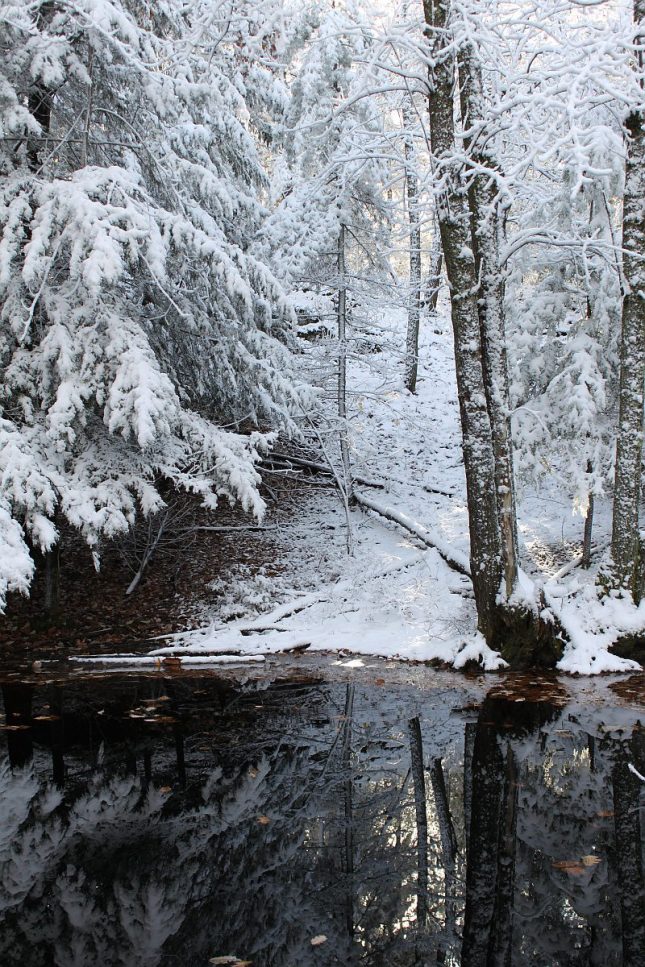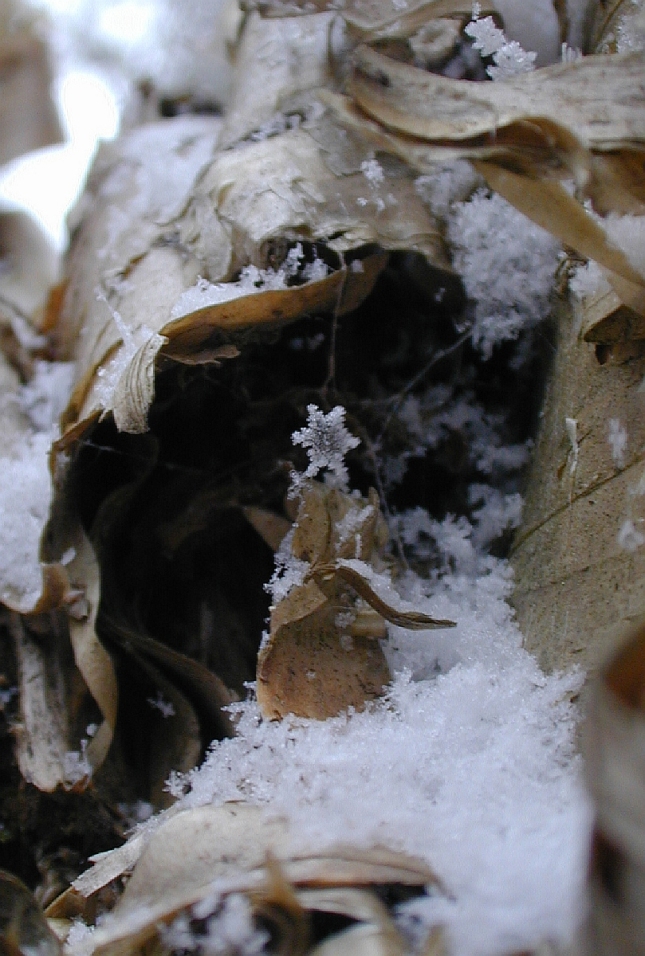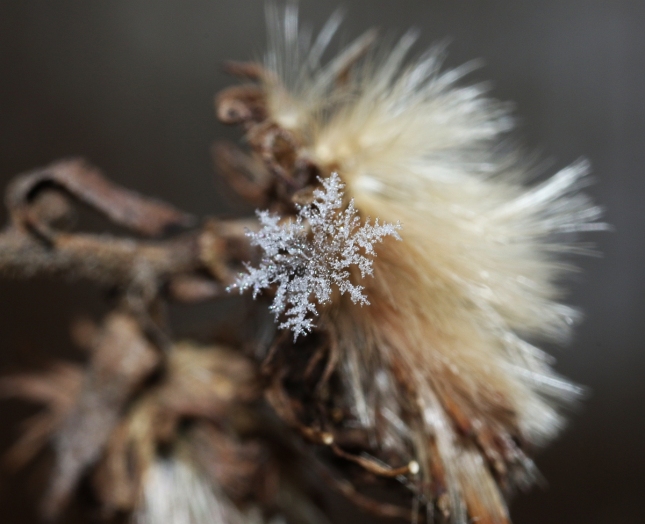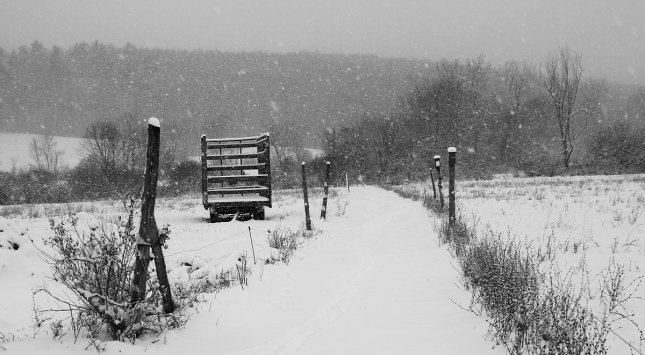
How can it be possible for such exquisitely beautiful jewelled crystals to fashion themselves in the vast spaces of the heavens, among the clouds!
Jean M. Thompson, Water Wonders Every Child Should Know (1907).

(photo by Wilson Bentley)
The most important and profoundly human act of exploration is not its execution, but its conception; it is the dream of knowing.
The turn of the 19th century brought landmark advancements in the science of technology – the study of electricity, of flight, of automobiles. One could be pardoned for thinking that natural history, that grand pursuit of the 1800s, had become passé. However, even if eclipsed in scientific headlines, the exploration of nature still occupied many and, in fact, had flourished, if not in the ‘lab’, then in the backyard and farmyard.
Water Wonders Every Child Should Know by Jean Thompson was part of the canon of the Nature Study Movement. A popular educational movement pioneered in the 1890s, it focused on insuring that, in the age of industrialization, children did not lose sight of the nature around them. The Every Child Should Know series, for example, included books on birds, trees, wild flowers, and earth & sky. The book’s subtitle, Little Studies of Dew, Frost, Snow, Ice and Rain, illustrates the movement’s emphasis on getting out and looking (i.e., exploring). Like Jean Thompson, many figures in this movement were women at a time when professional scientists were mainly men. The Movement would dwindle as the century progressed, but it helped make the popularization of science a respected calling.
What brings this book to the fore at this time of year is that it is illustrated with photographs by Wilson A. Bentley, a Vermont farmer also known as the Snowflake Man. Much of Water Wonders is devoted to the ‘games’ that water can play as it freezes in snowflakes, hoar frost and other ice formations, and Bentley’s black and white photographs provide clear, sometimes dazzling, examples of those patterns. Jean Thompson visited him several times in Jericho VT and his ideas apparently permeate much of the book.
He was a country bachelor, she was an affluent NYC divorcee, and the visits were something of a local scandal. She explicitly juxtaposes their two worlds as she invites the reader into the snowy landscape,
Most of us have given little time or very serious thought to the study of the snow, and the marvelous detail which goes to fashion the individual snow crystal. In fact, if we live in crowded city, we are inclined to look upon a heavy snowfall as something of a nuisance…impeding pedestrianism and traffic, and thoroughly undesirable until cleared away.
But once outside in the open country we are inclined to gaze forth upon the pure expanse of snow-covered hill and plain, resplendent and dazzling as it stretches afar under the pale winter sunshine, with a more kindly, tolerant mood…
The book is a call to scientific reverie, to the devotion of time and thought to snow, for she continues, “when you have … studied for yourself the marvellous phenomena and detail of snow-crystal formation, you will doubtless ever after.. in watching the fluttering, swirling flakes as they descend, exclaim: Oh, the wonder and mystery of it all!”
While Thompson does an inspiring job of invoking the mystery, Bentley spent much of his life actively wondering about snowflakes. He not only pioneered snowflake photography but, by keeping careful notes on climatic conditions, began to associate particular atmospheric conditions with the formation of certain types of snowflakes (see, for instance, his 1902 paper). Each of the snowflakes pictured in the book comes with a mini-biography. For example, one photo captio n reads, “These snow crystals are the product of a very great storm, and they travelled a long distance before reaching the earth. They were generated in a very high frigid altitude. When these singular snow crystals descended they fell in parachute fashion, the larger section downward.” How Bentley and Thompson knew the details of this biography is unclear, but whether or not they were 100% correct, Bentley’s observations and the ‘thought experiments’ that attempted to make sense of them opened up a new world, and Thompson realized and expressed its poetry.
n reads, “These snow crystals are the product of a very great storm, and they travelled a long distance before reaching the earth. They were generated in a very high frigid altitude. When these singular snow crystals descended they fell in parachute fashion, the larger section downward.” How Bentley and Thompson knew the details of this biography is unclear, but whether or not they were 100% correct, Bentley’s observations and the ‘thought experiments’ that attempted to make sense of them opened up a new world, and Thompson realized and expressed its poetry.
Both Bentley and Thompson were “non-scientists” who, in some ways, bypassed the profession to bring nature directly to their followers. This was not always well-received by full-time scientists and the tension is exemplified by early critics of Bentley’s photographs. Bentley took care to select flakes and even to manipulate photographs so as to highlight the most beautiful and intricate patterns. When others tried to replicate his efforts, they found that the vast majority of flakes were not fine symmetrical “jewels” but rather broken or misshapen bodies, and they called foul. In some ways, both sides were right: rather than being a random selection of flakes, the images in Water Wonders are indeed a careful, aesthetically-shaped collection of rarities, as Thompson herself noted. However, while explorers like Bentley and Thompson did have a responsibility to make accurate observations, they also had a responsibility to ‘sing the praises’ of what they saw. If it weren’t for the selection process, the images would not have been as awe-inspiring and, it is likely, many fewer people would have ventured down that first, dreamy step of snowflake exploration.
Ideas on snowflake classification and formation have evolved since 1907, but, for the most part, they are extensions rather than refutations of the book’s ideas. Current understanding holds that a snowflake begins life as a nubbin of ice on a tiny airborne particle such as a bacteria. Because of temperature differences, the air in the ‘vast spaces’ of a cold cloud can hold more water than that in the immediate vicinity of a growing snow crystal. The result is that water vapor in the cloud begins to accumulate as ice on the starting nubbins. The structure of  the water molecule itself determines the shape of the initial base (a hexagonal plate), but the pattern of any individual crystal’s growth is the product of temperature, humidity and history. If the air is very dry and/or cold, for instance, the snowflake will likely fall to earth as a hexagonal plate or tube. If, on the other hand, the air is humid and only moderately cold, each of the six corners will begins to sprout a feather-like arm. As a flake travels through the clouds, it may well enter different temperature and humidity zones, each of which will cause the crystal to grow in new ways. Thawing and re-freezing may occur, and ‘rough seas’ may break flakes or glue them together. The huge diversity of snowflakes occurs because it is very unlikely that any two flakes will share exactly the same biographies during their trip to the ground.
the water molecule itself determines the shape of the initial base (a hexagonal plate), but the pattern of any individual crystal’s growth is the product of temperature, humidity and history. If the air is very dry and/or cold, for instance, the snowflake will likely fall to earth as a hexagonal plate or tube. If, on the other hand, the air is humid and only moderately cold, each of the six corners will begins to sprout a feather-like arm. As a flake travels through the clouds, it may well enter different temperature and humidity zones, each of which will cause the crystal to grow in new ways. Thawing and re-freezing may occur, and ‘rough seas’ may break flakes or glue them together. The huge diversity of snowflakes occurs because it is very unlikely that any two flakes will share exactly the same biographies during their trip to the ground.
When Jean Thompson and Wilson Bentley looked up at a snow-filled sky, they may not have seen all of this, but they saw much of it. However, exactly what they knew is, in some ways, less important than what they dared to imagine. That combination of observation and imagination, of rock and dream, is at the heart of exploration by young and old. It is as an embodiment of that, as a book eloquently beckoning children to walk into the mind of a true explorer, that Water Wonders is our nomination for Book of the Year 1907.
Interested in more information? Here are some likely leads:
The Nature Study Movement by Kevin Armitage, a thought-provoking book well worth reading.
The Snowflake Man by Duncan Blanchard, I’ve not read the book, but the author’s essays in the Snow Crystals newsletter are enjoyable (see especially vol. 14, the article “Jean Thompson in Jericho” for more on the scandalous visits).
For kids, Snowflake Bentley by Jacqueline Briggs Martin and Mary Azarian is inspirational – in fact, this blog posting was written because Martin and Azarian’s book inspired a young boy to create a gingerbread house honoring Snowflake Bentley.
I had difficulty finding a ‘one-stop shop’ for modern snowflake information. However, Kenneth Libbrecht’s page is a great place to start. This video, while more about snow in general, is certainly a fitting, enjoyable evocation.
Aside from the first snowflake, the photographs here are our own. Advances in cameras and lenses have now made it possible to photograph ‘wild’ snowflakes. There are worse things that one can do than spending a snowy day hunting for freshly fallen snowflakes trapped in spider webs or feathery seed heads!

